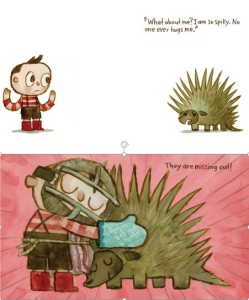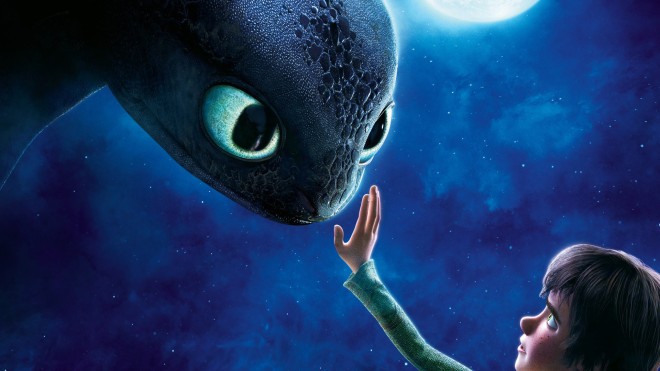I recently started a new job working full-time as a Marriage & Family Therapist. To celebrate my new employment, I ordered a few children’s books that I’ve had my eye on for a while. One of them is a gem of a book titled Hug Machine. Hug Machine is a book about a young boy who hugs anyone and anything he sees, including adults, crying infants, mailboxes, snakes and giant whales. After showing off his hugging prowess in various settings and on myriad subjects, the boy encounters a porcupine who seems to anticipate being the exception. “I am so spiky. No one ever hugs me.”
The next page shows a beautiful image of this boy, decked out in oven mitts, a catcher’s mask, and other protective gear, giving a big hug to that porcupine while assuring him (or her), that all those hug-withholders “are missing out!”
This image, and the concept of hugging a porcupine, is powerful.
My therapy office is no stranger to porcupines. Not literal ones, of course. (Unless you count my porcupine puppet!) Rather, many of my clients share some attributes with porcupines. Many of them have evolved spike-like defenses that protect them, but that also make them seem unapproachable, and, in turn, make them feel unlovable.
Consider angsty teens whose body language, and perhaps even their overt spoken language communicates that they don’t want you to come near them. Are they too spiky to hug? Think about a significant other who, after extended periods of hurt and frustration, is characterized by defensive mechanisms such as blame, denial, snarky comments, and the silent treatment. Is he or she too spiky to hug? And what about the individual who experienced so much abuse and neglect and betrayal growing up and in past relationships that they don’t know how to be vulnerable or open or trusting, nor do they feel safe doing so. Are they too spiky to be hugged? Further, underneath all of those spikes, do they actually want and need be hugged?
I am a big believer that everyone, whether they know it or not, yearns for connection. Everyone desires to be seen, valued, cared for and loved. Everyone wants to be huggable. Everyone wants to be hugged.
It is easy to allow obstacles to connection (such as defensive mechanisms) to keep us from expressing acceptance and love. But oh how the world needs more hugging machines and fewer lonely porcupines.



